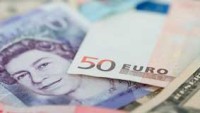 Stock markets continued to claw back their way back from their recent lows yesterday, buoyed by rising oil prices and a positive US session driven primarily by better than expected earnings announcements and a Fed Beige Book report which pretty much confirmed that the US economy was ticking over nicely.
Stock markets continued to claw back their way back from their recent lows yesterday, buoyed by rising oil prices and a positive US session driven primarily by better than expected earnings announcements and a Fed Beige Book report which pretty much confirmed that the US economy was ticking over nicely.
Markets also had one eye on the last Presidential debate between Donald Trump and Hillary Clinton, with the odds shifting more and more in favour of the Democrat candidate, as Trump’s campaign struggles to shake off the claims of inappropriate behaviour on his part. In some cases bookmakers are already paying out on a Clinton win, and to some extent this does appear to be the way financial markets are leaning too.
Last night’s debate didn’t really add anything new to alter that calculus, if anything it reinforced it as Mr Trump doubled down on his conspiracy theories theme by suggesting he might not accept the outcome of the final vote, whatever the outcome. That could become a problem if the final vote is close, less so if it isn’t, however if the Mexican peso is any guide it would appear that this election remains Hillary Clinton’s to lose, as the currency strengthened in the aftermath of the debate.
So far this week we’ve seen UK inflation hit its highest levels in two years jumping sharply in September to 1%, largely as a result of the negative effect of declining oil prices start to work its way out of the numbers.
While this is obviously not good news for consumers, wage growth continues to rise at a faster rate, albeit at a slightly lower rate in August of 2.3%, while the unemployment rate stayed at an eleven year low of 4.9%.
This “goldilocks” scenario doesn’t look like it will last much longer given the sharp drop seen in the pound in the last few months as import price rises filter down into higher prices, later on down the line. Despite the narrowing of this gap consumer spending has held up fairly well despite the shock of the leave vote in the summer, and today’s September retail sales numbers should give us a good indication as to how Q3 has panned out in terms of the performance of the UK economy. July retail sales rose 1.9%, and though the August numbers showed a small decline of 0.2%, the September numbers, if they come in as expected are expected to point to a strong Q3 performance for the UK economy. Expectations are for a rise of 0.3%, which would translate into a fairly positive Q3.
On an annualised basis UK retail sales are currently around 6%, and over the past few years these sorts of levels have never been sustainable, which suggests that Q4 will see a much more cautious consumer in any case, so Brexit or not consumer spending would have likely slowed in any case.
Away from the UK the other main focus will be on the latest ECB rate meeting, and while we aren’t expecting any move on policy, ECB President Mario Draghi is likely to face extensive questioning about recent reports about a tapering program, the timing of which seems rather curious, given that most speculation is about whether the ECB will look at extending its QE program beyond March 2017.
It is quite clear that there is growing disquiet on the part of some members of the council of the efficacy of the ECB’s bond buying program, particularly as the bank is likely to run out of eligible bonds to buy. The recent rebound in yields has eased the pressure somewhat in this regard, but at some point the time will come where the pool of available assets will have run dry, which means ECB rules will have to change if the program is to be extended.
This is probably why the ECB President’s calls for countries to implement structural reforms has become more strident in recent months. While we aren’t likely to get any joy today we could well see the ECB President start to prepare the ground for any potential move at the meeting in December, when the ECB updates its growth and inflation forecasts.
EURUSD – struggling to rally much beyond the 1.1060 area for the moment with support remaining at the 1.0950 area. We need to push back through the 1.1100 to stabilise, or risk a break below 1.0950 towards the 1.0800 area.
GBPUSD – the pound is currently finding resistance around the 1.2330 area, with a break retargeting the previous peaks just below the 1.2500 area. A move back below 1.2250 could well undermine that scenario and argue for a move back towards the recent lows at 1.2100. A break below the 1.2000 area has the potential to open up the previous flash crash lows at 1.1950, and possibly lower.
EURGBP – with current resistance at the 0.8960 area, a break below the 0.8900 area could well signal further losses towards the 0.8780 area. A break back above the 0.8960 area retargets the highs this week at 0.9080.
USDJPY – while the 104.30 caps the market the risk of a move lower below 103.00 remains a possibility towards 102.20. A sustained move through 104.50 could well see a move towards 105.70.













